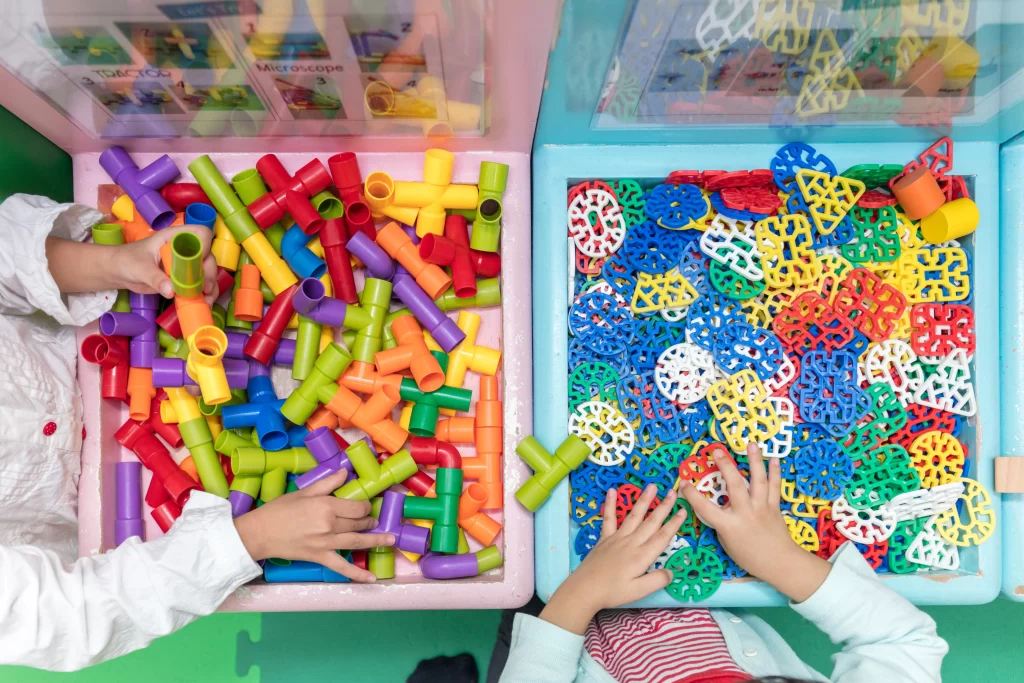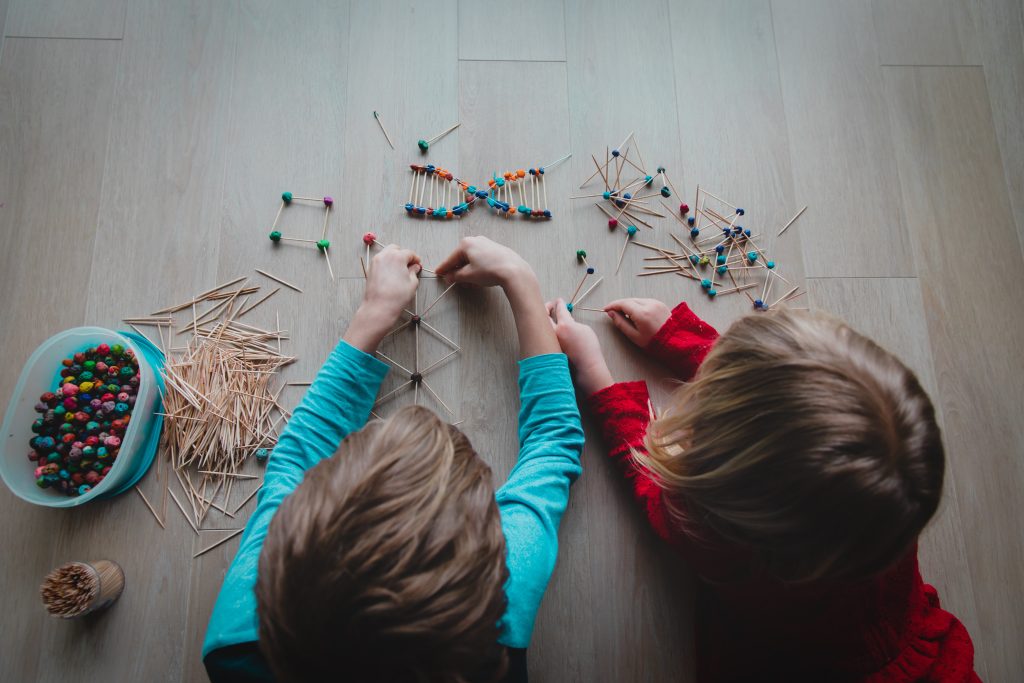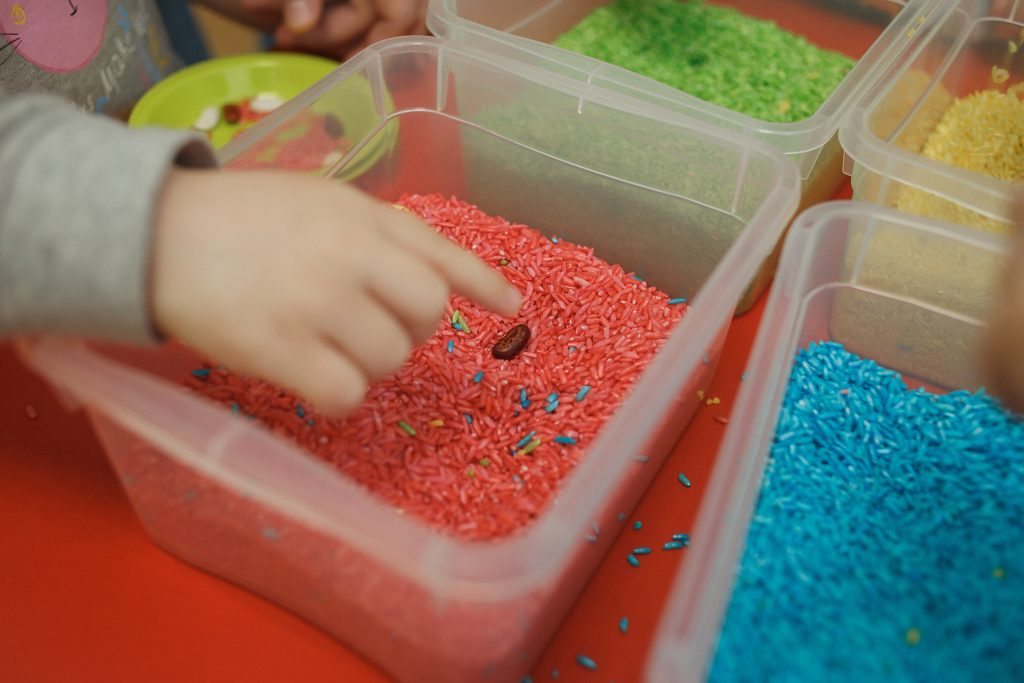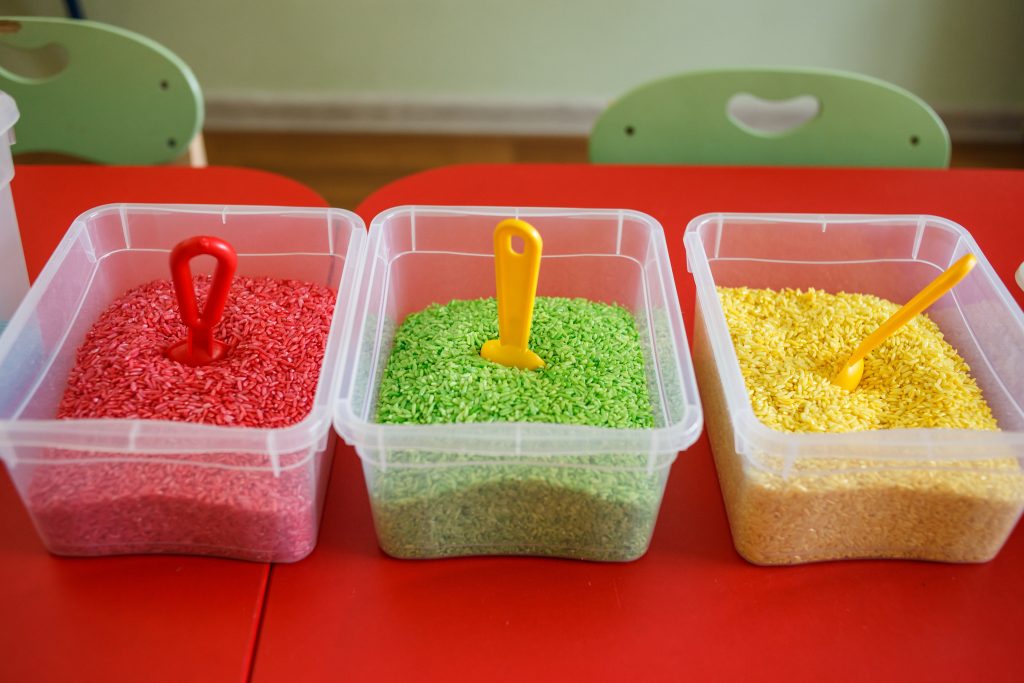
Sensory bins are more than just a fun activity for children; they play a significant role in early childhood development. These bins, filled with various materials and objects, stimulate the senses and provide numerous learning opportunities. Why are sensory bins important for your child’s development? We’ll dive into it in this article.
Enhancing Fine Motor Skills
Sensory bins help enhance fine motor skills as children manipulate small objects, scoop, pour, and sort materials. These activities strengthen hand muscles and improve coordination. Regular interaction with sensory bins can lead to better handwriting, cutting, and other tasks requiring fine motor control.
Promoting Cognitive Development
Engaging with sensory bins encourages cognitive development through problem-solving and critical thinking. Children explore different textures, shapes, and sizes, learning to categorize and differentiate objects. This hands-on exploration helps build their understanding of the world and enhances memory and attention to detail.
Encouraging Language Development
Sensory play is a great way to boost language development. As children describe what they feel, see, and do, they expand their vocabulary and improve their communication skills. Asking open-ended questions about their sensory experiences can further enhance language development and encourage expressive speech.
Supporting Emotional Regulation
Bins like these can provide a calming effect and help children regulate their emotions. The repetitive actions involved in sensory play, like pouring and sifting, can be soothing and help reduce anxiety. This calming influence can improve focus and attention, making it easier for children to manage their emotions.
Fostering Social Skills

Playing with sensory bins can also foster social skills. When children share a sensory bin, they learn to take turns, cooperate, and communicate with others. Group sensory activities encourage teamwork and can build stronger peer relationships, enhancing social development.
Stimulating Creativity and Imagination
Sensory bins stimulate creativity and imagination as children explore and create their own play scenarios. Using a variety of materials encourages them to think outside the box and come up with unique ways to interact with the sensory bin contents. This imaginative play is essential for cognitive and social development.
Developing Sensory Processing Skills
Sensory bins are particularly beneficial for children with sensory processing issues. They provide a controlled environment where children can safely explore different sensory inputs. Regular sensory play can help these children become more comfortable with various textures and sensations, improving their sensory processing abilities.
Integrating Learning Themes
These bins can be tailored to fit educational themes, making learning more engaging and hands-on. For example, a sensory bin with letters and numbers can reinforce literacy and numeracy skills. Themed sensory bins can make abstract concepts more concrete, aiding in better understanding and retention.
Creating Opportunities for Bonding
Parents and caregivers can use sensory bins as a bonding activity. Participating in sensory play together strengthens the parent-child relationship and provides quality time for interaction. It also offers parents insight into their child’s interests and developmental progress.
Embracing Holistic Development
Incorporating these into your child’s routine can provide numerous developmental benefits, answering the question “why are sensory bins important?” From enhancing fine motor skills to fostering creativity and emotional regulation, sensory bins offer a versatile and effective tool for holistic child development. Embrace the power of sensory play to support your child’s growth and learning in a fun and engaging way.

Latrice is a dedicated professional with a rich background in social work, complemented by an Associate Degree in the field. Her journey has been uniquely shaped by the rewarding experience of being a stay-at-home mom to her two children, aged 13 and 5. This role has not only been a testament to her commitment to family but has also provided her with invaluable life lessons and insights.
As a mother, Latrice has embraced the opportunity to educate her children on essential life skills, with a special focus on financial literacy, the nuances of life, and the importance of inner peace.

